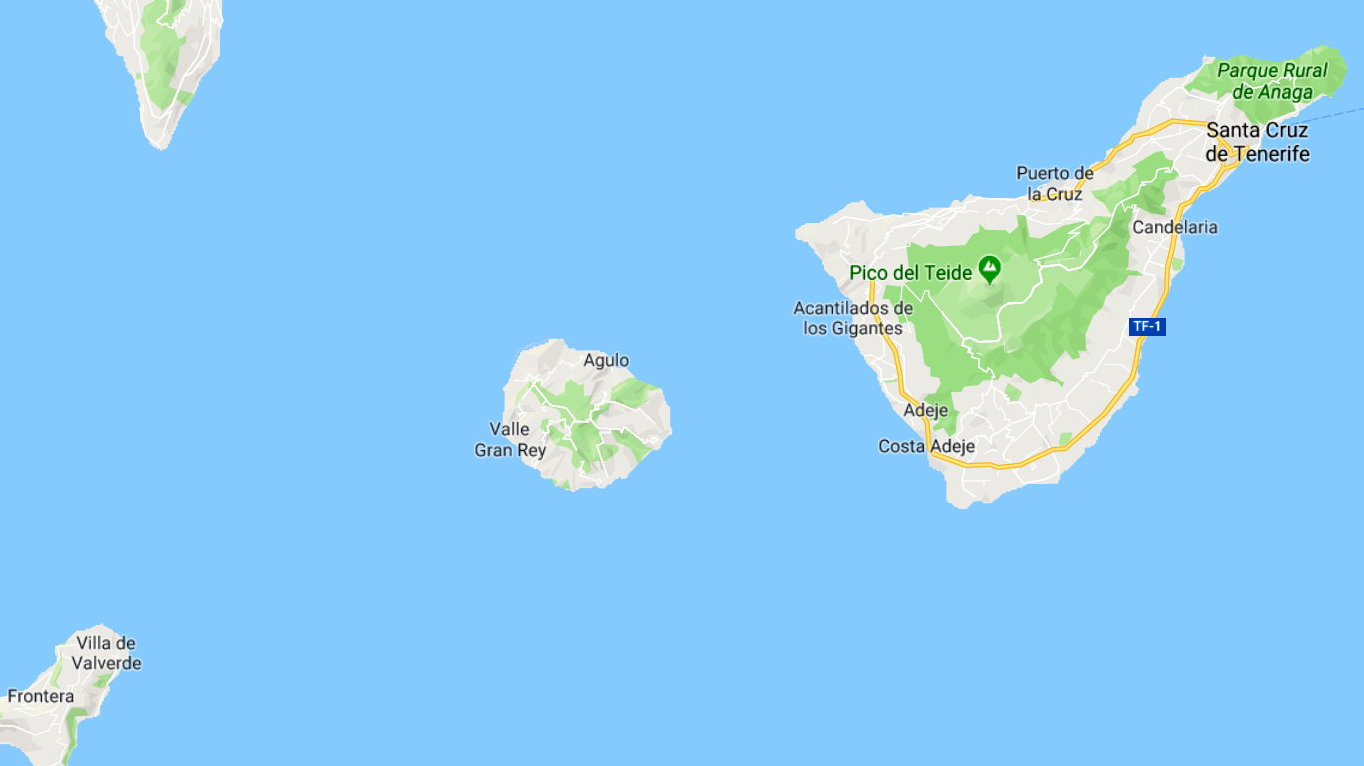
The Canary Islands are a chain of a dozen or so volcanic islands in the Atlantic Ocean, starting 100 km west of Morocco. The name means Islands of the dogs, after the aboriginal Guanche people that seem to have worshipped dogs.
Since 1494 the Canary Islands belong to Spain and even Admiral Nelson could not change that. In 1797 he lost his right arm in trying and failing to conquer Santa Cruz.
Away from the crowded beaches and busy tourist centers,Teide National Park is well worth a visit. El Teide is the main volcano here and it's top peaks at 3718 m, the highest point in all of Spain. In winter and early spring the volcano occasionally dusts herself in fresh snow.
Most of Tenerife's towns and villages are located near the coast on the main route TF-1.
Another worthwhile trip is a visit to La Gomera, a
small nearby island that is less touristic and sports rain forests, often covered in fog and clouds.


